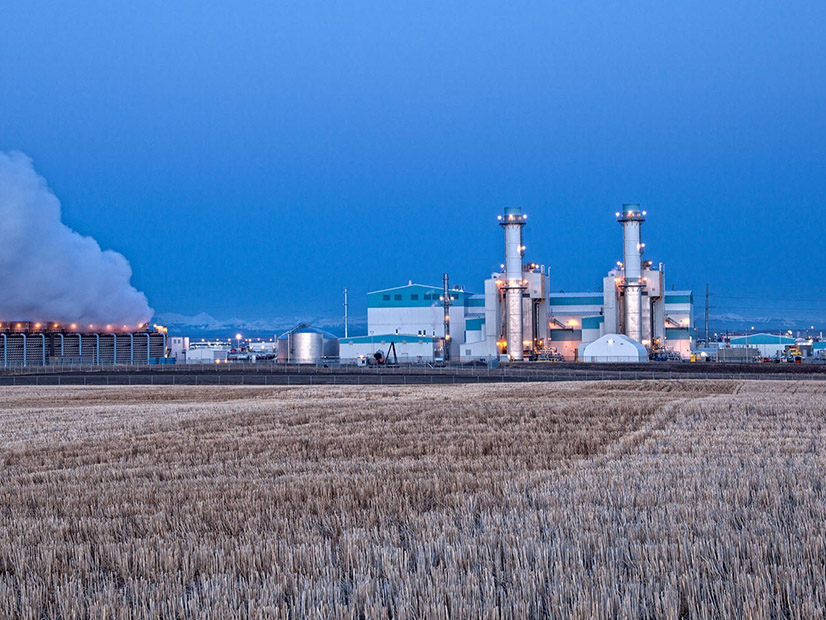
An emergency alert urging the public to conserve energy helped the Alberta Electric System Operator narrowly avert rolling blackouts during January’s extreme cold snap, an AESO representative said during a WECC webinar.
The Alberta Emergency Management Agency sent the alert to cell phones and televisions at 6:44 p.m. on Saturday, Jan. 13, asking residents to immediately limit their electricity use to essential needs only.
“Extreme cold resulting in high power demand has placed the Alberta grid at a high risk of rotating power outages this evening,” the message said.
Within three minutes, load dropped by 170 MW, followed by an additional 100 MW after 10 minutes, according to Lane Belsher, AESO’s director of grid and market operations. Load continued to fall as “people were shaming their neighbors into shutting their lights off,” he said.
“It amazed me,” Belsher said. “We did not end up shedding any firm load.”
Belsher discussed the January cold snap during a Sept. 10 WECC webinar focused on winter-weather readiness.
The Canadian province had been enjoying mild, fall-like weather in early January before temperatures dropped below minus 40 degrees Fahrenheit in some locations.
The system hit an all-time winter peak of 12,384 MW on Jan. 11. Strong winds — and accompanying wind generation — that accompanied the falling temperatures helped the system meet demand on that day, Belsher said.
But conditions grew more challenging as the wind died down. AESO issued an energy emergency alert 3 on four days in a row, from Jan. 12-15.
The situation was especially dire as AESO neared its peak demand Jan. 13. Solar power is mostly gone by the peak, Belsher said, and AESO is heavily dependent on gas generation during winter.
But right at the system peak, generation from a large thermal unit dropped from 450 MW to about 160 MW, he said. AESO decided to use 190 MW of battery storage that it had been keeping “in our back pocket,” Belsher said. But the extreme temperatures meant the batteries would work for only about an hour rather than the expected two hours.
Similarly, about 150 MW was available through Western Power Pool reserve sharing, but only for about an hour.
Belsher talked to Alberta government officials, who deemed the situation to be life-threatening. The emergency alert was sent to the public, and blackouts were avoided.
Alert Used During Calif. Heat Wave
A public alert is a tool that has also been used successfully to avoid rolling blackouts in California — albeit during a heat wave rather than a cold snap.
At 5:45 p.m. on Sept. 6, 2022, the Governor’s Office of Emergency Services sent a message to 27 million cell phones, accompanied by a series of shrieking tones.
The message, sent during a 10-day, record-breaking heat wave, said: “Conserve energy now to protect public health and safety. Extreme heat is straining the state energy grid. Power interruptions may occur unless you take action.”
CAISO saw demand drop by 2,385 MW, to 48 GW, within 20 minutes of the alert, enough to avoid blackouts. (See CAISO Reports on Summer Heat Wave Performance.)
At AESO, another issue during the January cold snap was the price cap for imports. Belsher said the Mid-C spot price in the Northwest the evening of Jan. 13 was about $1,300 CAD; AESO’s price cap is $1,000.
Belsher noted that the system completed its phaseout of coal this year. A gas generator was off temporarily during the cold snap due to a frozen gas valve.
Two additional combined-cycle gas units were commissioned this year but weren’t available in January.
“It would have been nice to have them, but I think we’re in better shape for this winter coming forward,” Belsher said.
Another speaker during the WECC webinar was David Lemmons, co-founder of Greybeard Compliance Services. He discussed a new NERC standard, EOP-012-2, which requires power plants to have a winter-readiness plan.
Lemmons said plant operators should consider whether their gas delivery path is protected from the weather, and if start-up will take longer when it’s cold outside.
Other advice included checking for broken or missing windows and making sure windows are closed before cold weather arrives.


